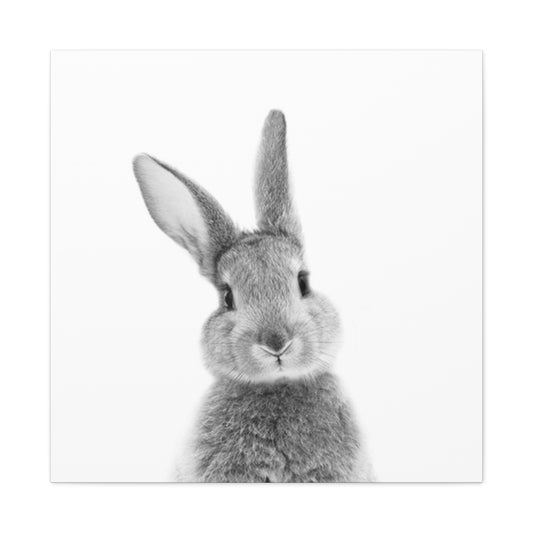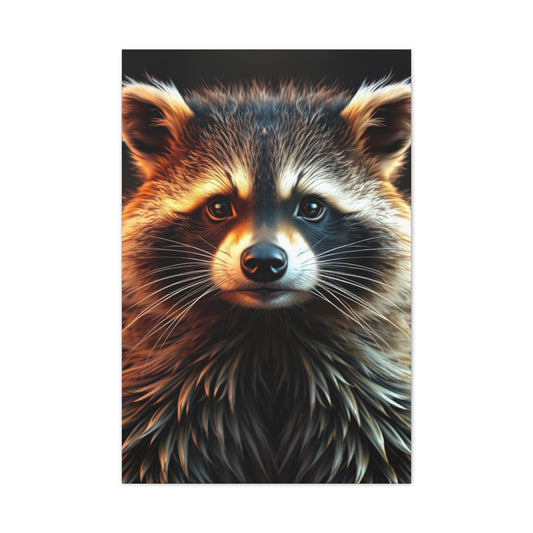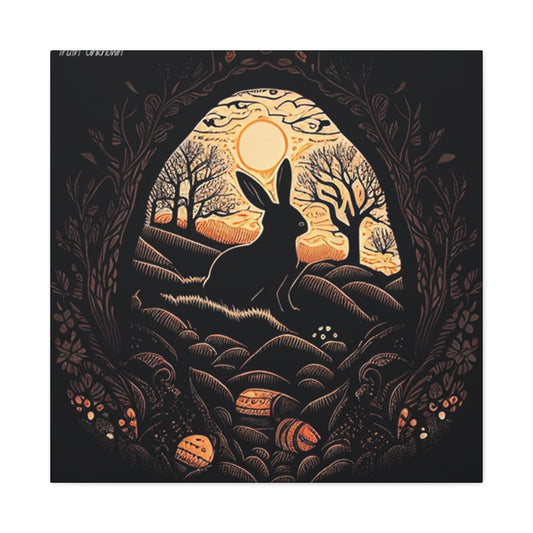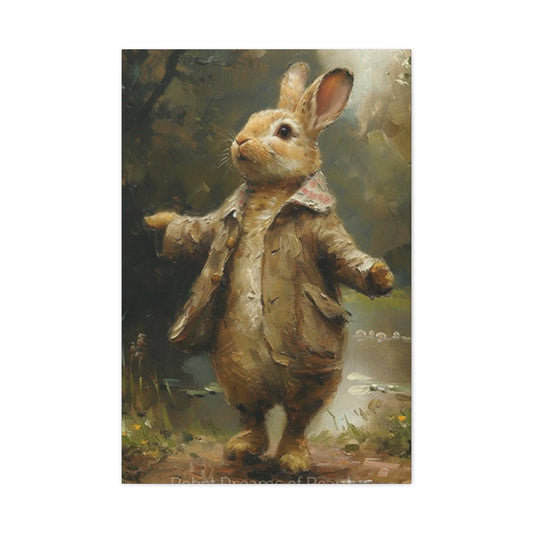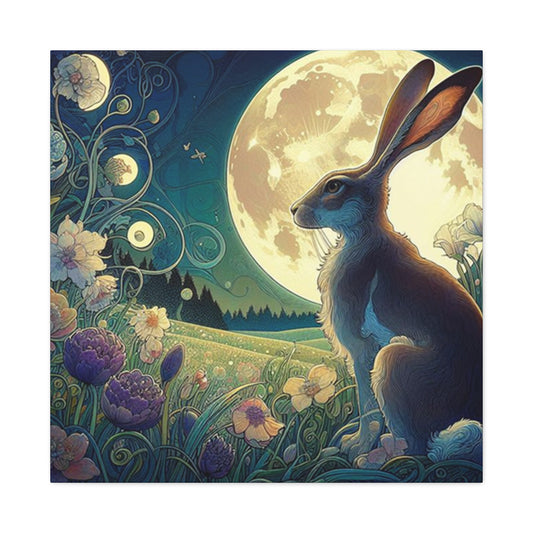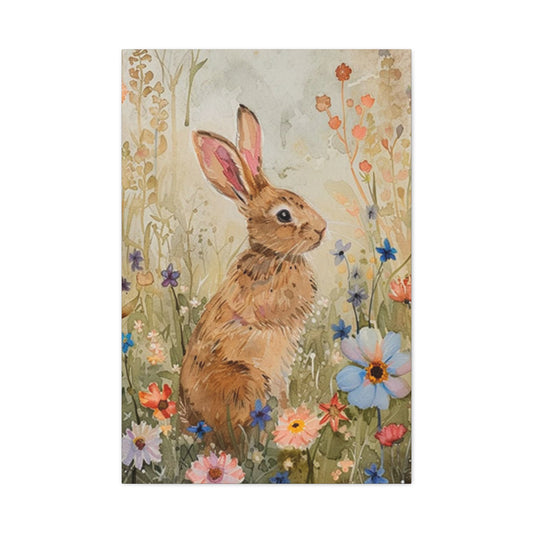Rediscovering Home as a Creative Sanctuary
The prolonged lockdown during the global Coronavirus pandemic forced many of us to confront our surroundings in unexpected ways. With routines upended and physical movement curtailed, homes became more than just living quarters; they became the core of our emotional, psychological, and creative lives. Amidst this seismic shift, creative expression through drawing, painting, and other visual pursuits evolved into more than a pastime. It became a vital strategy for mental wellness, a therapeutic channel that not only soothed anxiety but also reignited a sense of wonder.
In this period of stillness and introspection, our homes began to feel less like fixed constructs and more like pliable canvases. Traditional ideas about what a room is "meant" for quickly unraveled. Kitchens hosted art experiments between meals. Hallway consoles became platforms for clay, paper, or sketchpads. Bedrooms, long thought to be private havens of rest, subtly transformed into compact yet powerful art stations. This blurring of spatial purpose is not a compromise but an innovation that artists and creators must embrace, particularly when conventional studio access is restricted.
The shift isn't simply logistical; it's deeply philosophical. The creative act thrives on curiosity, spontaneity, and a willingness to break form, and so should our use of space. Embracing this adaptive mindset means recognizing that inspiration does not rely on the grandeur of our surroundings, but rather on the willingness to view those surroundings as dynamic collaborators. When physical boundaries shrink, our inner landscapes can expand in equal measure. The limitations of space, much like the constraints of a limited color palette in painting, can sharpen our focus and unlock unique stylistic clarity.
In this context, creativity ceases to be something reserved for special rooms or rare occasions. It becomes a living, breathing rhythm of the home itself. Recasting domestic environments into spaces of imaginative potential doesn't require a remodel or expensive materials. It only asks that we see our environment through the lens of possibility. That hallway? It's a potential gallery. That corner under the stairs? It could be the birthplace of your next series. With intention and a bit of inventiveness, any part of your living space can become a studio that supports, inspires, and evolves with your creative journey.
Building Your Artistic Nook with Intention
Establishing a personal creative zone is less about square footage and more about resonance. The goal is not to replicate a traditional studio, but to carve out a space, however modest, that feels attuned to your artistic rhythms. Whether it's a repurposed kitchen corner, a sun-drenched section of the living room, or even a foldable desk beside the bed, the key is consistency. When you return to the same spot repeatedly, it starts to develop an energy of its own. It becomes a space that understands your flow, remembers your focus, and welcomes your presence like an old friend.
The first step is to identify a space that offers just enough quiet and time ideally at least an hour where you can disconnect from the pull of everyday chores and re-center on your creative process. This could be as simple as a stool tucked near a window or a small floor area with a comfortable cushion. The environment doesn’t need to be perfect. It simply needs to be available to your imagination.
Natural light is an incredible ally in any artistic endeavor. If possible, situate your creative nook near a window where daylight can pour in. The subtle changes in tone, shadow, and hue throughout the day can stimulate your perception and deepen your visual engagement. However, don’t be discouraged if natural light is limited. Adjustable lamps with soft, warm bulbs can create a comforting ambiance that supports focused work at any hour. Using multiple light sources, such as overhead lights paired with desk lamps, offers flexibility and can help reduce eye strain over long sessions.
Organizing your materials in a way that aligns with your creative spontaneity is also essential. Consider a dual-container system, one for daily necessities and one for your creative supplies. Swapping out containers allows you to transition easily between tasks without fully dismantling your environment. This modular approach ensures that your tools are always within reach, while your space remains adaptable to the ebb and flow of daily life.
Safety, often overlooked, should be a non-negotiable part of your setup. The last thing you need during a wave of inspiration is to trip over an extension cord or spill solvent on your rug. Use protective coverings like an old blanket or cardboard sheets to guard surfaces against spills and splatters. A designated mat or floor protector not only serves as a safeguard but can also psychologically signal a shift from everyday function to creative intention.
The act of setting up your space, over time, becomes a quiet ritual that cues the mind into a state of readiness. Much like tuning a guitar or preparing a palette, this habitual preparation is the threshold into deeper artistic flow. With regular use, even the simplest corner will gather the echoes of your focus and become imbued with the weight and memory of your creative efforts.
Embracing Nature and Fluidity in Art-Making
If your living space includes outdoor access, whether it's a balcony, small backyard, or even just a front stoop, seize it as part of your creative ecosystem. Observing the natural elements within reach, from leaves fluttering in the breeze to shifting cloud formations, provides a wellspring of inspiration that changes daily. The practice of painting or drawing outdoors, often referred to as plein air, fosters a heightened sensitivity to light, form, and texture. Even within the confines of your home, nature can play a powerful role in nurturing your creative process.
For those without a garden, interior spaces can still benefit from natural elements. A potted plant by your easel, a view of the trees through the window, or even just the presence of organic materials in your workspace, like driftwood, dried flowers, or stones, can root your work in the living world. These elements serve as visual stimuli and emotional anchors, helping to ground you in the present while also sparking creative exploration.
Let go of the notion that your creative space must be orderly at all times. While a certain degree of organization supports clarity, over-regulating your environment can stifle spontaneity. Allow your space to be fluid, adjusting to your needs in the moment. Some days might call for chaos and color, others for minimalism and calm. Listen to that internal cue. Let your surroundings reflect the mood and energy of your practice.
This fluidity doesn’t equate to messiness; rather, it encourages a state of readiness. Knowing where things are, having systems that can adapt quickly, and allowing for variation in setup can make your practice feel more alive and less like a chore. The aim is to create an environment that serves your needs, not one that demands perfection.
Ultimately, the transformation of domestic space into a creative sanctuary is a testament to the power of intention. What began as a coping mechanism during lockdown has revealed itself as a lasting insight: artistic fulfillment doesn’t require ideal conditions. It flourishes in spaces infused with care, consistency, and openness to change.
As your personal studio continues to evolve, it will gain a spirit of its own, a quiet but powerful presence that reflects the depth of your creative journey. Through every session, every mark made, and every idea explored, your space will grow richer with resonance and meaning.
This process of reimagining and reclaiming space is not only practical but deeply poetic. It’s a reminder that creativity begins not in grand places, but in everyday corners touched by passion and purpose. When you invite art into your living space, you’re not just making room for creativity, you’re transforming your home into a living, breathing extension of your imagination. And that, in itself, is a profound act of artistry.
Redefining Creativity: Making Art with What You Have at Home
In a world that suddenly stood still, creativity found a new rhythm behind closed doors. Global lockdowns made a simple trip to the art supply store a luxury many could no longer afford. This forced a shift, not just in routine but in mindset. Artists across the globe found themselves asking a vital question: what can I create with what I already have?
This was not a setback, was an invitation. Without access to premium tools and specialty supplies, the artistic process returned to its roots. The focus became less about materials and more about imagination. Artists learned to adapt, scavenge, and innovate, unlocking raw forms of expression that no store-bought pigment could ever provide.
Art in confinement was never about perfection. It wasn’t about framing the final piece or preserving it for decades. It became about presence. The act of making art offered refuge, reflection, and release. A five-minute sketch done on the back of a receipt could be just as powerful, just as meaningful, as a meticulously rendered oil painting. In times of restriction, the value of art lies not in its longevity but in its immediacy way it captures a moment, calms the mind, and connects the heart.
With this shift in perspective, everyday objects took on new roles. Forgotten drawers became treasure chests. Cereal boxes turned into canvases. Old mail, packaging scraps, and torn catalogs emerged as collage material or textured surfaces. Pens, pencils, markers, and crayons that had been sitting idle in junk drawers suddenly had a purpose. Art supplies were no longer something to be purchased; they were something to be discovered.
Household paint, too, found its place in this new era of creative experimentation. That half-empty can of wall paint in the garage? It might just become the base layer of your next abstract piece. Water-based interior paints often mimic the behavior of artist-grade acrylics and can be applied to makeshift supports like cardboard, wood off-cuts, or leftover MDF panels. What matters is not the label on the tube, but the feeling of applying color to a surface and letting your hands move freely.
Transforming the Space Around You into a Creative Sanctuary
As the world shrunk to the dimensions of our homes, the relationship between space and creativity transformed. Living rooms became studios. Kitchen tables became easels. Creativity didn’t wait for the perfect setting to grow where it was nurtured.
Organizing materials became part of the ritual. Grouping pencils, markers, crayons, or pastels into repurposed containers like tins, jars, or old pouches helped to create order. A tidy and intentional setup allowed the mind to focus and settle into the flow state. Even the simplest actionssharpening a pencil, tearing paper to size, or laying out suppliestook on a calming rhythm. In the quiet repetition of preparation, many found solace. These small routines became gateways to mindfulness, turning cluttered thoughts into steady motion.
This process wasn't just about accessing materials; it was about reclaiming control. In a time when so much felt uncertain, preparing to make art matter how modest the toolsoffered a rare sense of agency. Setting up your workspace became a grounding exercise, a way to reclaim part of your day as yours alone.
And there was something refreshingly tactile about these analog interactions in a digitally saturated world. With so much of daily life shifting onlinework meetings, classes, and social check-ins, hands rarely touched anything outside of a keyboard or screen. Art brought us back to texture, temperature, weight. The cool touch of paper, the smooth pull of a crayon across cardboard, the soft smudge of pastel on scrap paper sensations reminded us we are still physical beings in a very physical world.
For those working with more traditional mediums like oil paint, the home environment posed unique challenges. The usual methods involving turpentine or solvents were no longer feasible, particularly in closed spaces without ventilation. But even here, creative problem-solving led the way. Many artists turned to solvent-free techniques: using only pure oil paints, blotting brushes between color changes, and cleaning tools with vegetable oil, followed by warm soapy water. This method was slower, yes, but also gentler on both the lungs and the spirit.
Acrylic painters, too, found themselves reconsidering their process. Excessive rinsing, once routine, now felt wasteful and environmentally unfriendly. Wiping brushes with a cloth between colors conserved water. Mixing palettes on reusable or disposable surfaces reduced the need for constant cleaning. Rather than pouring painty water down the drain, many collected it in sealed containers for safe disposal. These simple shifts reflected a deeper awareness that doesn’t exist in a vacuum. It’s part of the world, and how we make it matters.
Watercolor proved to be the quiet hero for many. Light, portable, easy to clean, and capable of remarkable expressiveness, watercolors became a favorite for those working in small spaces. Their immediacy suited the mood of the momentfluid, spontaneous, and forgiving. Even diluted markers or watercolor pencils found new life as unconventional yet effective tools. When activated with a wet brush, they produced delicate transitions and unexpected textures that added emotional depth to even the simplest composition.
Letting Go of Perfection and Embracing Process Over Product
Perhaps the most profound change brought on by the lockdown was a philosophical one: a shift in how we define serious art. For many, the absence of conventional materials or studio space became a catalyst for letting go of internal hierarchies. The idea that only work made with archival materials, on premium paper, using professional tools was "real art" began to fade.
In its place grew a deeper understanding of art as exploration. As a reflection. As a release.
When we stop worrying about whether something will last, we begin to focus on what it means in the present. We stop aiming to impress and start aiming to express. That’s when the most honest work emergesraw, spontaneous, and alive. It may not be destined for a gallery wall, but it carries the energy of the moment it was created. And that is what gives it power.
This liberation opened the door to joyful experimentation. Without the fear of wasting expensive materials, people were more willing to try new techniques, take risks, and explore freely. Color combinations that once seemed too bold suddenly felt necessary. Styles once dismissed as childlike were embraced for their authenticity. The boundaries between art and craft, between serious and playful, began to blurand in doing so, they began to disappear.
This spirit of creative freedom wasn’t limited to professional artists. It reached children, parents, students, and retirees alike. Families created art together. Individuals who hadn’t picked up a brush in years found themselves sketching between video calls. Creativity became democraticavailable to anyone, anywhere, with anything.
And perhaps that is the most lasting lesson from this period of creative constraint: that art doesn't require permission. It doesn’t demand a pristine studio or expensive supplies. All it asks for is your attention, your willingness to engage, and your openness to the unexpected.
As the world slowly reopens and routines return, this mindset is worth carrying forward. Keep your eye tuned to the overlooked, your hands ready to transform the mundane, and your heart open to creating not for permanence, but for presence.
Because when we make art with what we have, we are not only adaptingwe are awakening. And in that awakening, something deeply human is reclaimed.
Creating a Body-Aligned Studio: Why Ergonomics Matters for Artists at Home
As the world turned inward during extended lockdowns, many artists found themselves carving creative corners out of kitchens, bedrooms, and hallways. But while the paint flowed and inspiration surged, one crucial element of long-term creativity often went unaddressed: the body. In the flurry of self-expression, physical comfortparticularly posture and ergonomicsbecame an afterthought. However, even the most inspired artistic process cannot fully thrive when the body is strained. Over time, ignoring physical needs slowly chips away at joy and productivity, quietly replacing flow states with fatigue and discomfort.
When artists think of setting up a home studio, the emphasis usually falls on lighting, tools, or storage. But very few consider how their own body fits into that environment. The truth is, your posture is a foundation upon which all creative output is built. An unsupported lower back or elevated shoulder might seem like a minor inconvenience in the moment, but it adds up. The spine begins to compress, wrists tire faster, and eventually, sessions shorten, not due to lack of inspiration, but due to physical weariness.
A key aspect of addressing posture begins with how you sit. If you’re working at a table, assess the height of your chair relative to your work surface. Ideally, your forearms should rest easily on the table, parallel to the floor, without your shoulders creeping toward your ears. This setup allows your spine to remain long yet relaxed, supporting your natural curves. An ergonomically sound chair with lumbar support can do wonders, but even a basic seat can be improved with a firm cushion or rolled towel behind your back. Consistency is more important than perfection.
Standing while working can be a game-changer. It activates muscles, increases blood circulation, and prevents the sluggish energy that accumulates during long hours of sitting. If your current table isn’t high enough, improvise with sturdy boxes or wooden risers to bring your workspace up to standing height. Secure your paper or canvas to a vertical surfacelike a wall-mounted board or large clip frameto simulate the benefits of an easel without the need for bulky furniture. Standing also encourages more dynamic movement, allowing your whole body to participate in the act of creation.
Even if you’re a dedicated sitter, mobility must remain part of your routine. Sitting still for hours can lead to tight hips, back pain, and even diminished mental clarity. The best remedy? Get up regularly. Aim to rise every hour, even briefly. Do a few stretches, walk around the room, or simply breathe deeply while moving your arms and shoulders. These tiny resets do more than improve circulationthey refresh the mind and unlock fresh ideas. Many creatives report that their best concepts often arise not at the desk, but during these spontaneous pauses.
Designing a Workspace That Supports Movement, Vision, and Creative Flow
A studio doesn’t need to be large to support a healthy, creative rhythm needs to be intentional. Lighting, for instance, has a more profound impact on your posture than many realize. Poor illumination leads to squinting, craning the neck forward, and holding your head at awkward angles of which contribute to strain and fatigue over time. If you have access to natural light, position your workspace so that the light comes from the side opposite your dominant hand. This avoids casting shadows over your work while maintaining visual clarity. For darker spaces, opt for adjustable desk lamps with soft white bulbs, which are easier on the eyes during long sessions.
Flooring may not be the first thing artists think about, but it has an undeniable effect on comfort and positioning. If your chair slips on hardwood or tile, add a textured rug to anchor your movements and create a sense of stability. Artists who prefer working on the floor with large-scale paper or canvas should use a thick cushion or folded blanket to support the hips and lower back. Without proper cushioning, prolonged floor work can lead to stiffness in the knees, tight hip flexors, and lingering lower back issues.
The accessibility of tools also influences posture and efficiency. Items you reach for frequently as brushes, pencils, erasers, or cleaning clothsshould be placed within easy reach. Ideally, everything should be accessible within a natural 180-degree arm sweep, preventing repetitive twisting, leaning, or bending. Think of your workspace like the cockpit of an airplane: everything you need should be right in front of you, in predictable and efficient positions. This arrangement not only protects your body but also conserves creative energy for the actual work.
For those navigating multi-purpose spacesperhaps sharing a kitchen table with family or toggling between household duties and studio, psychological ergonomics become just as important as physical ones. Establishing clear mental cues to switch modes helps you transition smoothly into your artistic flow. Something as simple as donning a studio apron, lighting a specific candle, or playing a consistent background soundscape can act as a boundary ritual. These transitions signal to your brain that it's time to enter a different frame of mindone that prioritizes focus, curiosity, and expression over distraction and multitasking.
Even small creative spaces can benefit from these deliberate choices. Your body remembers patterns, and over time, rituals and ergonomic habits become second nature. This internal structure can serve as a powerful anchor, especially when external circumstances remain in flux. A workspace that aligns with your body’s needs becomes a sanctuary, not just a zone for output.
Cultivating Lifelong Creativity Through Physical Awareness and Intentional Design
While inspiration is often romanticized as sudden and spontaneous, sustainable creativity is more about rhythm and care. The physical act of making art is not just a cerebral exercise is profoundly embodied. Each stroke, sketch, or mark is the result of collaboration between the mind, hand, and the body that connects them. Honoring that full-body experience is what allows artists to show up day after day, month after month, and even decade after decade without burning out or breaking down.
The relationship between ergonomics and creativity goes beyond comfort. When the body is aligned and supported, the mind is free to roam further, take more risks, and stay present longer. A supportive chair or properly placed lamp may not seem like a muse, but they clear the path for the muse to arrive and linger. Posture becomes a form of respectnot just for your body, but for your craft.
In a world where we are often encouraged to "push through" discomfort, artists have a unique opportunity to resist that narrative. Instead of sacrificing well-being for output, we can treat our physical selves as worthy collaborators in the creative process. After all, the art we create is often a reflection of how we move through the world. If our movements are tense and restricted, that energy can echo in the work itself. But when our bodies are free, fluid, and supported, the work that emerges tends to carry that same ease and grace.
Even with limited resources or cramped quarters, awareness makes all the difference. A tiny change in chair height, an extra pillow, or a few minutes of mindful stretching can transform how your studio feels. The beauty of a home studio is its adaptability. You have the freedom to adjust, tweak, and evolve your space as your needs change. There is no one-size-fits-all solutiononly the ongoing process of listening to your body and responding with intention.
Ultimately, a posture-aware, ergonomically thoughtful studio isn’t just about reducing pain or boosting output’s about deepening your relationship with the act of creation itself. The more comfortable and cared for you feel, the more space you have to explore, innovate, and enjoy your artistic practice. And in times when the external world may feel uncertain or chaotic, that inner structure you’ve mindfully crafted can become a source of enduring stability and strength.
Creativity made in comfort is not a luxury; it’s a declaration of value. It’s an investment in the self as much as the work. When body and mind are in harmony, the studio becomes more than just a place to make things becomes a place to thrive.
Finding Inspiration in Solitude: Navigating Creative Block in the Home Studio
In the quiet of isolation, when familiar routines fall away and outside distractions diminish, a unique challenge often arises for artists working at home: what to create. The absence of external stimulation can make the blank canvas seem even more intimidating. But the truth is, not every piece of art must carry deep meaning or convey a grand idea. During prolonged periods of isolation, especially in times of crisis, the mere act of making art is a powerful, personal triumph.
Creative energy doesn't always need to chase greatness. The goal isn't to produce a masterpiece each day but to show up for the process. Adjusting expectations in this way doesn't diminish the quality of the workit simply reframes the purpose. In moments when the world feels uncertain, creating becomes a stabilizing force, a rhythm to anchor you. Artistic expression becomes a form of meditation, where repetition, experimentation, and play are more valuable than perfection.
Start small. Begin with a quick drawing or spontaneous gesture on paper. You don’t need a subject in mind. Just allow the hand to move, responding to your breath or your emotional state. These unplanned marks often reveal more about your inner world than deliberate compositions. Over time, a visual language emerges that speaks to the moment you're living through, even if you don’t fully understand it yet.
This intuitive approach is especially valuable when dealing with psychological turbulence. During isolation, our minds tend to churn with anxiety, fear, or grief. Instead of suppressing these emotions, use them as creative fuel. Art offers a way to externalize what's swirling inside, translating complex feelings into shape, form, and texture. The brushstroke becomes an extension of the nervous system, the line a trace of emotional weight.
Creating without a plan invites spontaneity, a sense of discovery. Whether you're exploring abstract mark-making or doodling aimlessly, the act of engaging with materials connects you to the present. In this way, the studio becomes a sacred space not for producing products, but for processing experience.
Emotional Expression Through Material: Letting the Medium Speak
The visual arts possess a unique power to capture what words often fail to express. In times of personal or collective hardship, when language seems insufficient, making visual work can offer catharsis. Art can become a mirror, a witness, a silent confessional. In the context of isolation, this becomes even more essential.
Try using the materials themselves as an extension of your emotional state. Watercolor’s fluid unpredictability mirrors vulnerability and change. Charcoal’s dark, smudged quality may echo grief or ambiguity. Acrylics layered thickly can build a sense of protection or density, while minimal graphite lines might reflect a longing for clarity. There is no right wayonly your way.
Trust your instincts. Let the canvas absorb your frustrations. Let your journal pages catch the ink of restless thoughts. The textures, colors, and compositions you choosewhether raw and messy or delicate and sparsecan give shape to what you’re feeling. This doesn’t just provide relief, it deepens self-awareness. Even if no one sees the work, it serves a purpose.
Still life, often dismissed as mundane, takes on profound new meaning during isolation. The everyday objects surrounding youcups, books, candles, a single bloom in a jarcan become muses. These items are witnesses to your daily existence. Arranging and observing them closely invites a practice of presence. Painting or drawing them transforms the ordinary into the poetic.
This close looking is more than observation; it's an antidote to emotional numbness. When the world feels surreal or suspended, paying attention to detail brings you back to earth. It reminds you that time continues to pass, that there is beauty in the overlooked. You may find comfort in repetitionrecreating the same object from different angles or in varying light. In these acts, you reclaim a sense of control and continuity.
Photography can also be a springboard for new ideas. Scroll through your phone’s gallery. Among those hundreds of images are untold stories. A snapshot of your child’s hand, an evening sketch, and a corner of your kitchen hold visual potential. Use these moments as references for drawings or paintings, or even for abstract studies in color and composition. You can also take new photos with intention, treating your home and surroundings as a source of mystery and inspiration.
For those who miss figure drawing sessions, there are numerous online resources offering gesture drawing, timed poses, and live-model streams. Even drawing from a paused film or documentary can help hone observational skills. The human form remains a profound subject, even when viewed through a screen.
But don’t stop with the visual. Art is an experience that can be enriched by engaging other senses. Listen to music while you worklet the mood or tempo influence your mark-making. Read poetry aloud in your studio space. Light a candle with a scent that stirs memory. Taste something unfamiliar and translate its sensation through line and color. The studio, even in isolation, can become a deeply multisensory environment.
Creating with Compassion: Redefining Artistic Success in Isolation
One of the most damaging myths around creativity is the belief that productivity equals success. Especially during isolation, this belief must be challenged. Artistic practice is not a race or a performance. It’s a process of staying connected to yourself and the world around you, even if that world has grown smaller.
There is value in the ten-minute sketch made while your soup simmers. There is meaning in the scribbled notebook entry or the half-finished painting. These fragments tell the story of your life in that moment. Permit yourself to create without the pressure of outcomes. Let the process become the focus.
This generosity toward yourself is not lazinessit is essential. It acknowledges that being present is more important than being perfect. When you create without judgment, you give yourself the freedom to evolve. Your work will grow, not through force, but through patience and curiosity.
Isolation also offers a rare opportunity: the chance to reflect. With fewer distractions, you can begin to hear your inner voice more clearly. What themes naturally emerge in your work? What colors are you drawn to? What stories keep surfacing? These observations can guide future projects and deepen your understanding of your creative identity.
Think of your creative journey during isolation as a kind of visual diary. Each mark, photo, or sculpture documents a chapter in your emotional landscape. These works might not hang in galleries, but they hold personal significance. Over time, you may look back and see how you processed uncertainty, fear, love, or hope through your practice.
Isolation also doesn’t mean your creativity must stay isolated. Share your work online if you feel moved to. Join virtual art challenges, attend live workshops, or simply connect with fellow creatives on social media. Seeing how others interpret this moment can inspire you, and your contributions might offer someone else the encouragement they need.
Ultimately, the greatest lesson of creating in isolation is this: art is a lifeline. It doesn’t demand perfection or performance. It asks only that you show up, that you look closely, that you feel deeply. Through this practice, you will not only make artyou will make meaning, and from that meaning, a new sense of wholeness can emerge.
When the world slowed down, creativity became a quiet act of resilience. In our homes, amidst uncertainty, we were given the space to listen more deeply, to see differently, and to discover the profound beauty of simply being present with the process. Let your work tell that story. Let it be a testament to your inner strength and your willingness to create, no matter the circumstances.











